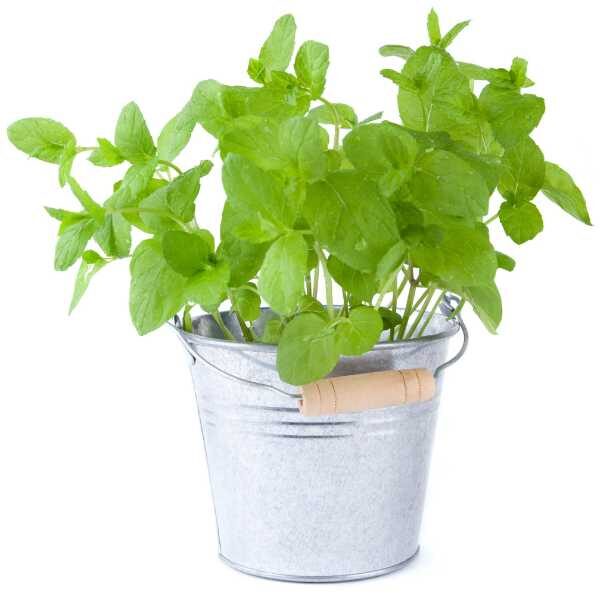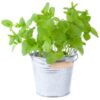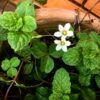Mint Peppermint
$4.49
Mentha Piperita
- Seed Count 200
- Culinary And Medicinal Herb
- Perennial
Out of stock
Email when stock available
Description
Mint Peppermint is a perennial favorite for many people, it has high menthol content and its refreshing taste is uplifting and cleansing. It is popular for infusions and is a favourite among herbal tea drinkers and is one of the easiest herbs to grow yourself. It thrives in moist, part-sun to shaded locations and is often grown in containers to restrict spreading.
An exceptionally fragrant and ornamental plant Peppermint flowers are large nectar producers and honey bees as well as other nectar harvesting organisms forage them heavily. Beekeepers can produce a lovely honey if there is a sufficient area of plants. It makes a wonderful addition to a butterfly or wildlife garden.
Recipes often specify a “sprig” of mint, a sprig usually being a stem of mint with 3 or more mint leaves. For cocktails and drinks calling for mint sprigs or leaves such as such as Schnapps, Mint Juleps or Mojitos, 6 to 8 leaves of mint is more appropriate.
| Method: Raise seedlings | Soil Temp: 21°C - 24°C |
| Cool Mountain: Sep - Dec | Position: Part to full sun |
| Arid: Jun-Jul, Apr-May | Row Spacing: 30 cm |
| Temperate: Aug-Nov, Mar-Jun | Planting Depth: 3 mm |
| Sub Tropical: Aug-Nov, Mar-Jun | Harvest: 90 Days |
| Tropical: Apr - Jul | Plant Height: 30 cm |
Soil Preparation
- Mint prefers moist, well draining soil with pH 6.0–7.0.
Clay Soil:
- Amend with compost, coco coir, or gypsum.
Sandy Soil:
- Add organic matter (compost, aged manure) to retain moisture.
Raised Beds/Containers:
- Ideal for invasive control and drainage.
Tip: Mint spreads aggressively—plant in pots or use root barriers in gardens.
Sowing Seeds
- Fill trays/pots with seedraising mix.
- Sprinkle seeds on the surface (they need light to germinate).
- Lightly cover with 3 mm of soil.
- Mist with water and keep moist (use a spray bottle to avoid dislodging seeds).
- Place in a warm, bright spot (not direct sun). Germination takes 10–15 days.
Tip: Start seeds indoors in cooler regions; use a heat mat for faster germination.
Transplanting Seedlings
When:
- After 4–6 weeks, once seedlings have 2–3 true leaves.
Harden Off:
- Gradually expose seedlings to outdoor conditions over 7 days.
Spacing:
- 30 m apart in gardens or 1 plant per 20cm pot.
Note: In hot climates (e.g., QLD), plant in dappled shade to avoid scorching.
Watering & Feeding
Watering:
- Keep soil consistently moist. Water deeply 2–3 times weekly in summer; reduce in winter.
Mulch:
- Apply sugarcane mulch or straw to retain moisture and suppress weeds.
Fertiliser:
- Use a half strength liquid seaweed or compost tea monthly.
- Avoid high nitrogen to preserve flavour.
Tip: Use drip irrigation in dry regions to conserve water.
Maintenance
Pruning:
- Pinch tips regularly to encourage bushy growth. Remove flowers to prolong leaf production.
Containment:
- Trim roots annually in pots; use metal edging in gardens.
Pests/Diseases:
- Aphids/Spider Mites: Spray with neem oil.
- Mint Rust (common in humid zones): Remove infected leaves; improve airflow.
- Powdery Mildew: Avoid overhead watering; treat with milk spray (1:10 milk:water).
Harvesting
When:
- Harvest leaves once plants are 15cm tall. Morning is best for peak oils.
How:
- Snip stems above a leaf node to encourage regrowth.
Preservation:
- Airdry leaves or freeze in ice cubes for year round use.
Tip: Avoid harvesting more than 1/3 of the plant at once.
Troubleshooting
Yellow Leaves:
- Overwatering or poor drainage. Add perlite to soil.
Leggy Growth:
- Insufficient sun—relocate to a brighter spot.
Bolting (flowering):
- Caused by heat stress.
- Provide afternoon shade in summer.
Companion Planting
Mint repels pests but can overpower nearby plants. Pair with:
- Tomatoes (deters aphids).
- Cabbage (repels cabbage moths).
- Nasturtiums (trap crop for aphids).
Warning: Keep mint away from parsley or chamomile.
Container Growing Tips
- Use pots with drainage holes.
- Repot annually with fresh soil.
Place pots on patios to deter ants and flies.
Postage Charge
Orders under $30 attract a $4.50 shipping charge. Orders $30 and above have free shipping.
Order Times
Seed orders are normally dispatched within three business days. You will receive an email when seeds are mailed out.
Postage Days
Seeds are mailed out Monday to Friday at 1pm. Except for the Friday of long weekends.
Postage Times
WA 2-3 Days: SA,NT 3-5 Days: NSW, ACT, QLD, VIC: 5-7 Days
Carrier
We use Australia Post Letter Postage for the majority of orders
Not only are our seeds packed in recycled paper envelopes, we keep the theme going when we post out website orders. To protect your seeds from moisture and the letter box munchers (snails), we use a very special plastic free material made from plants. They are then put into recycled mailing envelopes. Green all the way 💚🌿











1 review for Mint Peppermint